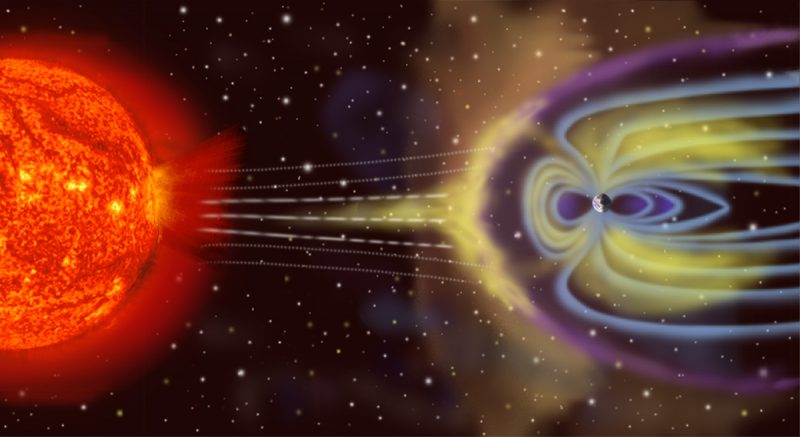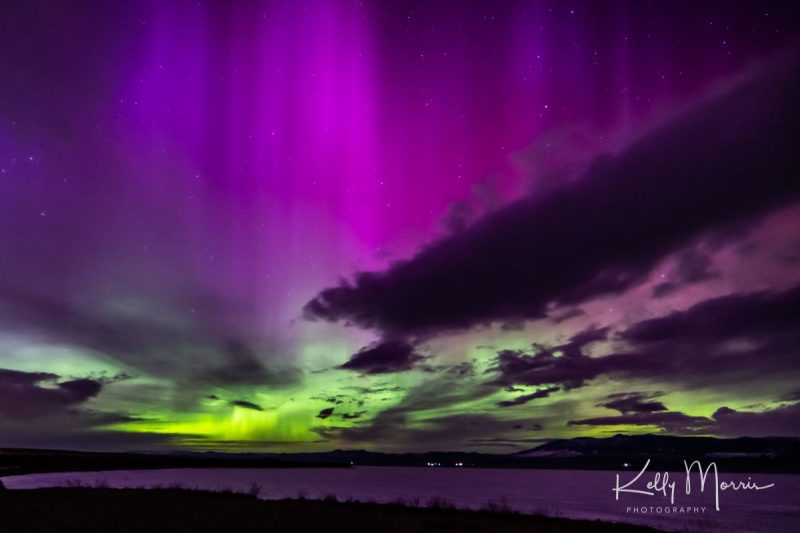
What happens during a geomagnetic storm?
A geomagnetic storm is a temporary disturbance in the magnetic field surrounding Earth. Flares on the sun and/or coronal mass ejections (aka CMEs) cause these storms. When a flare erupts on the sun’s surface – and a CME, or cloud of charged particles, goes hurtling outward from the sun – a geomagnetic storm might follow a few days later. Earth would need to be in the path of the CME in order for the geomagnetic storm to take place.
The frequency of geomagnetic storms increases and decreases with the 11-year cycle of activity on the sun. So during solar maximum, geomagnetic storms occur more often.
During geomagnetic storms, people at far northern and southern latitudes on Earth see increased displays of the beautiful aurorae, or northern and southern lights.

The last solar cycle – cycle number 24 – peaked in April 2014. It was a substantially quieter peak than other recent solar cycles, with sunspot numbers and other activity on the sun down to a level that hadn’t been seen since cycles 12 to 15 (1878-1923).
The current solar cycle
The current solar cycle – cycle number 25 – has been quite active so far and will continue through 2030. In fact, it’s expected to peak around 2025.
Recently, on March 23, 2023, EarthSky warned of a geomagnetic storm in our daily Sun activity post. And storm it did! People reported seeing the aurora as far south as Oklahoma, New Mexico, Arizona and Virginia. So stay tuned, we may see more geomagnetic storms over the next few years.
For current solar activity visit EarthSky’s Sun activity post.
By the way, auroras tend to happen more around the equinoxes.
Bottom line: Geomagnetic storms are disturbances in Earth’s magnetic field, caused by activity on the sun.
Read more: Aurora photos from the March 24, 2023, geomagnetic storm











